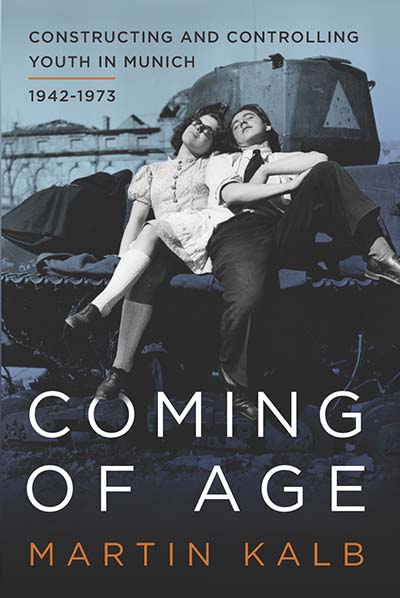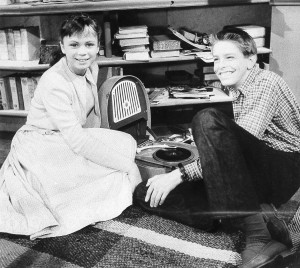by Martin Kalb
 I did not anticipate that I would focus on images or constructs of youth in Munich. My research was originally tied to denazification in Nuremberg, later Bavaria more broadly. That interest took shape as I was working in the Stadtarchiv City Archive in Nuremberg for several months, and while I was helping organize a database tied to individuals with connections to National Socialism. I dug deeper, looked into the main study on denazification in Bavaria at the time, and wondered how Nuremberg might fit into all that. Later on, once I began my Ph.D. program in the United States, I continued to look into the scholarship, maybe with a fresh mind given a broader change in scenery. In this context I was reading through Die Süddeutsche Zeitung newspaper on microfilm in the library one evening. At the time, it was among the few daily newspapers I could access for Bavaria. One headline struck me: “Bavarian Problems: Youth-Food-Export.” I wondered, how could the state of the young be as important as economic recovery? What was the obsession tied to youth about?
I did not anticipate that I would focus on images or constructs of youth in Munich. My research was originally tied to denazification in Nuremberg, later Bavaria more broadly. That interest took shape as I was working in the Stadtarchiv City Archive in Nuremberg for several months, and while I was helping organize a database tied to individuals with connections to National Socialism. I dug deeper, looked into the main study on denazification in Bavaria at the time, and wondered how Nuremberg might fit into all that. Later on, once I began my Ph.D. program in the United States, I continued to look into the scholarship, maybe with a fresh mind given a broader change in scenery. In this context I was reading through Die Süddeutsche Zeitung newspaper on microfilm in the library one evening. At the time, it was among the few daily newspapers I could access for Bavaria. One headline struck me: “Bavarian Problems: Youth-Food-Export.” I wondered, how could the state of the young be as important as economic recovery? What was the obsession tied to youth about?
These initial questions marked the starting point for a research journey. I spent months in archives in Munich to look into original documents while keeping fears around youth in mind. I read countless first hand accounts from young people, and I talked to some about their experiences growing up in Munich. I also dug up radio programs and other materials, thereby broadening the sources I used and moving beyond traditional archival research. Plus, I wandered the streets of Munich to get a sense of its cityscape in relation to youth: where did adult authorities and supposed juvenile delinquents clash? How did certain sidewalks, street corners, and city squares become deviant spaces?

Young people with a portable record player, living the teenage dream around 1955. Courtesy of Otfried Schmidt/
Süddeutsche Zeitung Photo.
In addition to these journeys I also started to see the world around me in a different light. I noticed how youth is a construct constantly changing based on underlining power structures. Additionally, it became apparent that adults generally frame youth along a binary, either as the hope for our future or as a threat to our prospects. Not surprisingly then, there is great value around controlling these constructs or images of youth, back then, and certainly today. These points shaped my approach and research, of course in conversation with the works of other scholars that had outlined similar dynamics.
In that process a connection between constructing and controlling became increasingly apparent: those constructing youth as delinquent often benefited from the existence of illegality in society. That point, teased out in a case study focusing on Munich, is at the heart of my book. And, it is arguably still at the center of many conversations tied to juvenile delinquency. In this sense, my micro-history of how Munich came of age can tell us much about growing up as a society well beyond the Bavarian capital.

An American GI and German Fräuleins on the
streets of Munich, 1948. Courtesy of Georg Fruhstorfer/Bayerische Staatsbibliothek München/Bildarchiv.
Dr. Martin Kalb is an Assistant Professor of History at Bridgewater College in Virginia. His research on the histories of everyday life (Alltagsgeschichte), youth, and environmental justice has appeared in publications such as The Journal of the History of Childhood and Youth and Global Environment. For more information please visit his personal webpage.
